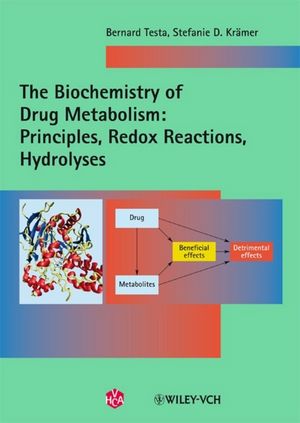The Biochemistry of Drug Metabolism: Volume 1: Principles, Redox Reactions, HydrolysesISBN: 978-3-90639-053-6
Paperback
332 pages
May 2008
 |
||||||
The first of the two volumes is divided into three parts. Part One begins by introducing xenobiotics in the broad context of physiological metabolism, and continues with an overview of the processes of drug disposition and metabolism. It then goes on to summarize the macroscopic and microscopic locations of drug metabolism in animals and humans. This is followed by an introduction to the all-important issue of the consequences of drug and xenobiotic metabolism, providing an initial overview of pharmacokinetic, pharmacological and toxicological consequences. The last chapter examines drug metabolism in the context of drug research, with a focus on medicinal chemistry.
The second part is a major component of the book, corresponding to the role of oxidoreductases as major agents of metabolism. Cytochromes P450 receive particular attention, namely their multiplicity, structure, catalytic mechanisms, and the various reactions they catalyze, while other oxidoreductases are also presented, such as flavin monooxygenases, monoamine oxidases and other amine oxidases, aldehyde oxidase and xanthine dehydrogenase, peroxidases, and dehydrogenases-reductases. Each drug-metabolizing enzyme or enzyme family begins with an Enzyme Identity Card summarizing its nomenclature and biochemical essentials.
Part Three begins with a survey of the classification, properties and catalytic mechanism of the innumerable hydrolases known or suspected to play a role in xenobiotic metabolism. The focus then shifts to a systematic presentation of the various substrate classes, namely carboxylic esters, amides and peptides, lactams and lactones, esters of inorganic acids, alkene and arene epoxides, and some miscellaneous hydrolyzable moieties.
With a foreword by Prof Leslie Z. Benet, the world's best and best-known biopharmaceutical scientist
The second part is a major component of the book, corresponding to the role of oxidoreductases as major agents of metabolism. Cytochromes P450 receive particular attention, namely their multiplicity, structure, catalytic mechanisms, and the various reactions they catalyze, while other oxidoreductases are also presented, such as flavin monooxygenases, monoamine oxidases and other amine oxidases, aldehyde oxidase and xanthine dehydrogenase, peroxidases, and dehydrogenases-reductases. Each drug-metabolizing enzyme or enzyme family begins with an Enzyme Identity Card summarizing its nomenclature and biochemical essentials.
Part Three begins with a survey of the classification, properties and catalytic mechanism of the innumerable hydrolases known or suspected to play a role in xenobiotic metabolism. The focus then shifts to a systematic presentation of the various substrate classes, namely carboxylic esters, amides and peptides, lactams and lactones, esters of inorganic acids, alkene and arene epoxides, and some miscellaneous hydrolyzable moieties.
With a foreword by Prof Leslie Z. Benet, the world's best and best-known biopharmaceutical scientist



